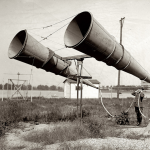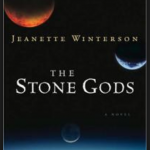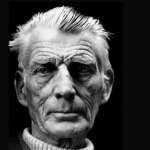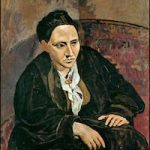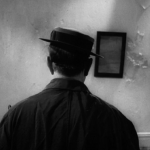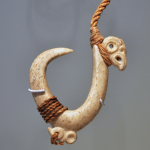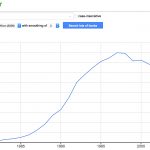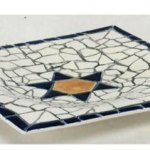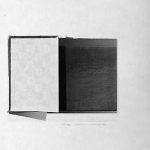2017
Amazon’s Alexa, Apple’s Siri, Microsoft’s Cortana, and Google Now: How will our encounters with these intelligent personal assistants - robots we’ve invited into our homes to speak with and listen to us, who share this data with vectorialist institutions that monitor our networked transactions - alter both human language and our efforts to lead meaningful lives? In a wide-ranging, philosophical essay that exposes various myths of computation while presenting a candid assessment of the rapidly evolving culture of reading, poet John Cayley speculates that literature will be displaced by aurature. Listen up, readers: A major challenge in the programming era will be to develop linguistic aesthetic practices that intervene significantly and affectively in socio-ideological spaces thoroughly saturated with synthetic language that are largely controlled by commercial interests. The time for aesthetic experiments that disrupt the protocols of a still-nascent aurature is now.
This essay was reprinted in part for the Handbook on Electronic Literature (Bloomsbury 2018).
In this review of Rethinking the New Medievalism, Matt Cohen ponders the significance of philology's ongoing period of "reflection, [...] refraction, and revisitation." Against the backdrop of contemporary shifts in the humanities, more generally, Cohen sees opportunities for medievalists to intervene, bringing with them both clarity and innovation to fields in a state of fluctuation.
In this essay, Ortega departs from Ulises Carrión’s notion of book as a “spatio-temporal entity” which goes beyond verbal language, in order to demonstrate how hybrid works (or "textual environments") such as Amaranth Borsuk’s Between Page and Screen (2012) may create “new genres and material and poetic expressiveness.” By drawing on Rita Raley’s “TXTual practice,” Ortega also demonstrates how the "material dynamics" displayed by these works decisively contributes to the generation of meaning.
2016
In an attempt to re-materialize postmodernism, Damien Gibson provides, by drawing on material ecocriticism and on the concept of “narrative agency,” a critical posthumanist reading of Jeanette Winterson’s The Stone Gods.
While describing the work of Beckett as deeply influenced by nominalism, Holly Phillips explores “ineffable permutations of intellectual history” and demonstrates how medieval philosophy has deeply influenced twentieth century literature. Simultaneously, Phillips undermines the idea that nominalism’s dismantlement of universals has finally been accomplished by postmodernism.
In an essay spanning modernist and postmodernist poetics, Lynley Edmeades demonstrates how postmodern poetry cultivates “present-ness” by drawing on Lyotard’s concept of “constancy,” Gertrude Stein’s notion of “continuous present” and Caroline Bergvall’s adherence to “non-linearity.”
In this essay, Neil Vallelly answers the question “What is postmodernism?” by demonstrating how disappearance, as envisaged by Jean Baudrillard, “lies at the heart of postmodern theory.” Vallelly also argues for the critical value of postmodernism’s traces in contemporary literature and suggests the adoption of a "methodology that embraces disappearance."
The closing keynote at the Summer 2015 University of Otag0 symposium, "What [in the World] Was Postmodernism," also closes the present collection, here in ebr (December 2016). In December of 2019, McHale's Afterword, Ciccoricco's Introduction and essays by Simon During and Amy Elias will be included in Post-Digital: Dialogues and Debates from electronic book review (Volume 2).
Simon During proposes to unravel the “layered” history of postmodernism in New Zealand. In so doing, the author of this essay treats postmodernism as “an event rather than a period” and describes postmodernism’s development in the epoch of neo-liberalism.
Jacob Edmond argues that while postmodernism might be useless as a theoretical concept or periodization, it nevertheless illuminates changes, both local and global, in the final decades of the twentieth century. Edmond analyzes the uses of postmodernism in the United States, New Zealand, Russia, and China. He shows how the various and even contradictory uses of the term postmodernism allowed it to represent both sides in the unfolding tension between globalization and localism in late twentieth-century culture.
An Introduction to the gathering.
Alexandra Dumitrescu’s essay describes the development of metamodernism in New Zealand and presents metamodernism as an interrogation of “modernist uprootedness or postmodern drifting.”
In response to Jeanette McVicker's review of The Planetary Turn, John Bruni examines what it means to theorize a sense of the planetary.
Andrew Lindquist reviews Michael LeMahieu's Fictions of Fact and Value, examining the influence of logical positivism on American literature of the postwar era.
In this review, Manuel Portela considers Matthew G. Kirschenbaum's Track Changes in light of a "general computerization of the modes of production of writing."
Using recent events of planetary significance as a point of departure, Jeanette McVicker reviews The Planetary Turn: Relationality and Geoaesthetics in the Twenty-First Century, edited by Amy J. Elias and Christian Moraru.
Jen Phillis situates Jessica Pressman's Digital Modernism: Making It New in New Media as a rejoinder to "Neoliberal Tools (and Archives)" by David Allington, Sarah Brouillete, and David Golumbia.
Afterthoughts on the end of the sixties, the death of the author, the rise of Theory and the fall of humanism.
In this review of How to Be an Intellectual: Essays on Criticism, Culture, and the University, Christopher Findeisen analyzes Jeffrey J. Williams's assessment of higher education in the United States. Linking the decline of funding for universities and colleges, rising student debt, the exploitation of academic labor, and the digital humanities, the review examines the omission of accounts of "the not-so-remarkable everyperson academic, the untenured, the up-and-comers, and the downtrodden."
Lisa Swanstrom interviews Matt Kenyon, founding member of S.W.A.M.P. (Studies of Work Atmosphere and Mass Production, co-founded with Doug Easterly), an Associate Professor of Art in the Stamps School of Art and Design at the University of Michigan, and a 2015 TED Fellow.
